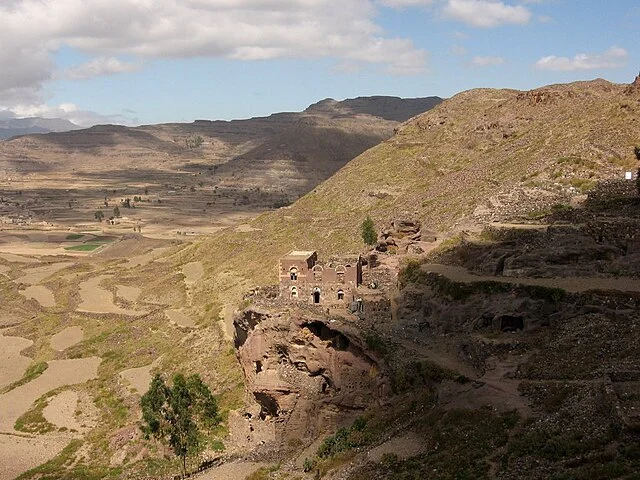Baynun Fortress, also known as Baynun, is an ancient hilltop fortress in Yemen. It is located approximately 100 kilometers south of Sana’a, the capital of Yemen. The site is one of Yemen’s most significant archaeological landmarks, given its historical and strategic importance during ancient times. The fortress played a vital role in protecting trade routes and was a key center for regional rulers.
Get your dose of History via Email
Historical Significance

Baynun Fortress dates back to at least the first millennium BC. Archaeologists have discovered evidence indicating that it was used by the Himyarite kingdom, which ruled Yemen from around 110 BC to AD 525. The Himyarites were known for their architectural innovations and influence over vast trade networks, including the Incense Route, which connected the Arabian Peninsula to the Mediterranean and the Indian Ocean. Baynun’s strategic location made it a critical stronghold for controlling these trade routes.
Throughout its history, Baynun also served as a military defense post. It protected the region from foreign invasions, including Roman attempts to control Arabian territories. The fortress’ location on elevated terrain made it a formidable barrier to invaders.
Architectural Features

The architecture of Baynun Fortress reflects the advanced building techniques of the Himyarites. Built with large stone blocks, the fortress walls were designed for maximum defense against external forces. Archaeologists have uncovered remnants of towers, storage areas, and water reservoirs, indicating that the site could support long-term defense efforts during sieges.
Additionally, inscriptions found at Baynun suggest that the fortress had religious significance. Inscriptions in South Arabian script, the writing system used by the Himyarites, have been identified on some of the stones, offering insights into the cultural practices of the period.
Excavations and Archaeological Discoveries
The fortress has been the focus of several archaeological studies. Excavations have revealed pottery, tools, and other artifacts, providing evidence of daily life within the fortress. These findings suggest that Baynun was more than just a military site; it was also a thriving community. Excavators have found Himyarite coins and religious artifacts, offering further insights into the trade and spiritual practices of its inhabitants.
The site’s excavation has contributed significantly to understanding the Himyarite civilization, especially their military strategies and architectural skills.
Decline and Abandonment
Baynun Fortress began to decline after the fall of the Himyarite kingdom in AD 525. The site was gradually abandoned, although its significance as a historical and cultural landmark remained. In later centuries, the region was subject to invasions and political instability, further contributing to the site’s neglect. Today, much of Baynun lies in ruins, though it continues to draw interest from historians and archaeologists.
Conclusion
Baynun Fortress offers valuable insights into the Himyarite kingdom and the broader history of southern Arabia. Its location, architecture, and historical importance reflect the complex and strategic nature of ancient Yemeni civilizations. Ongoing archaeological work at Baynun continues to uncover new information, shedding light on this key site. Understanding Baynun helps us better appreciate the cultural and military innovations of the Himyarites, as well as the region’s broader historical role in ancient trade and defense.
Source:

